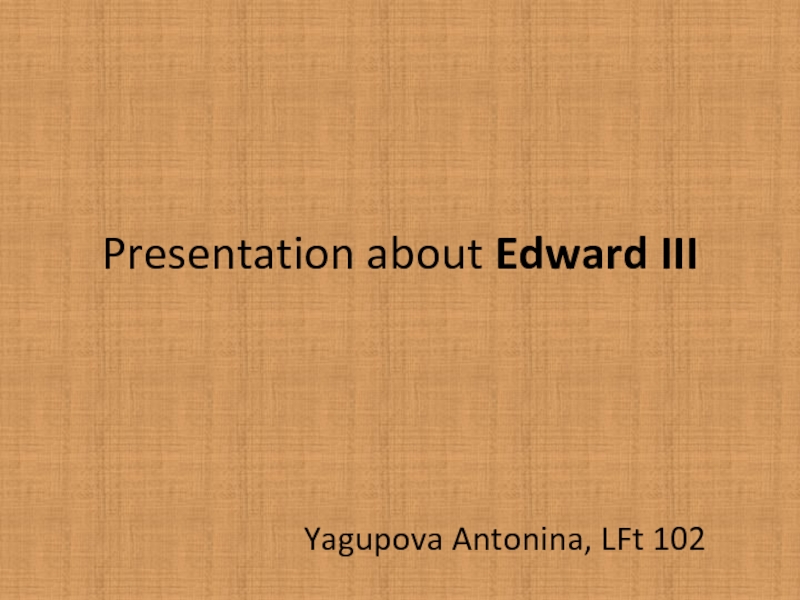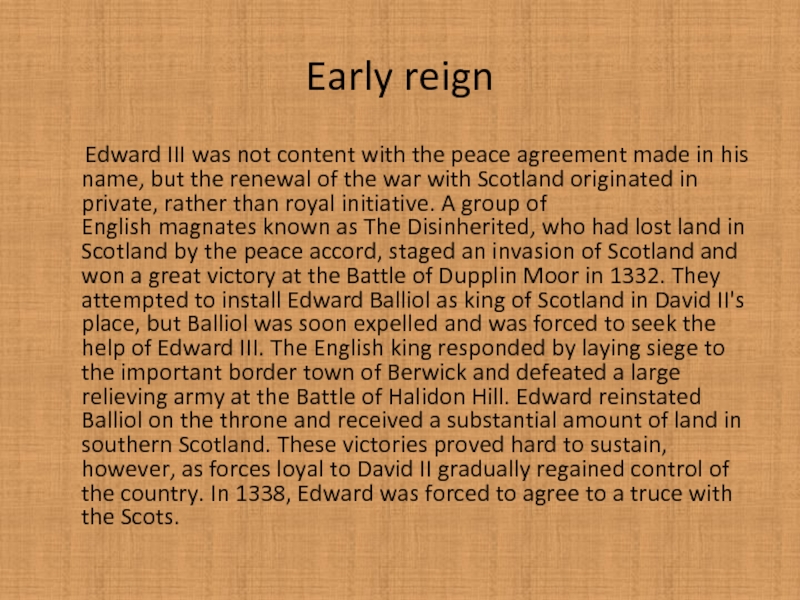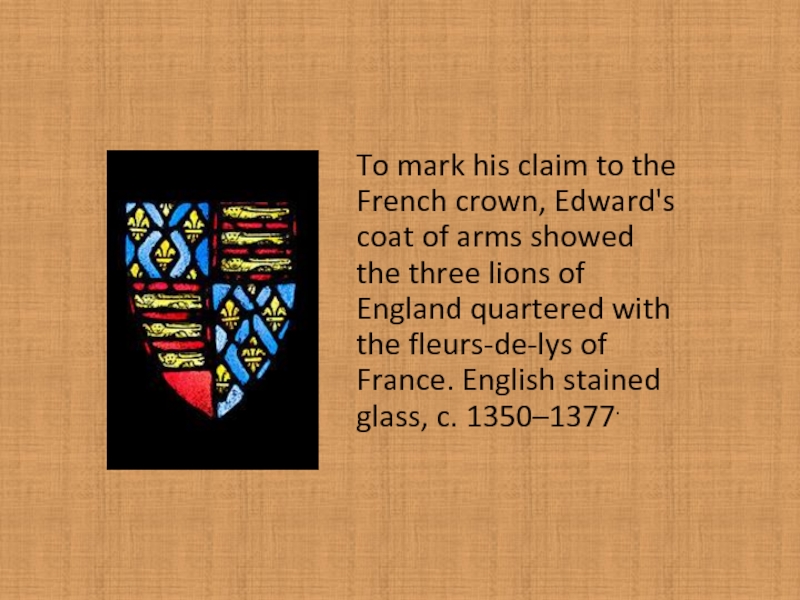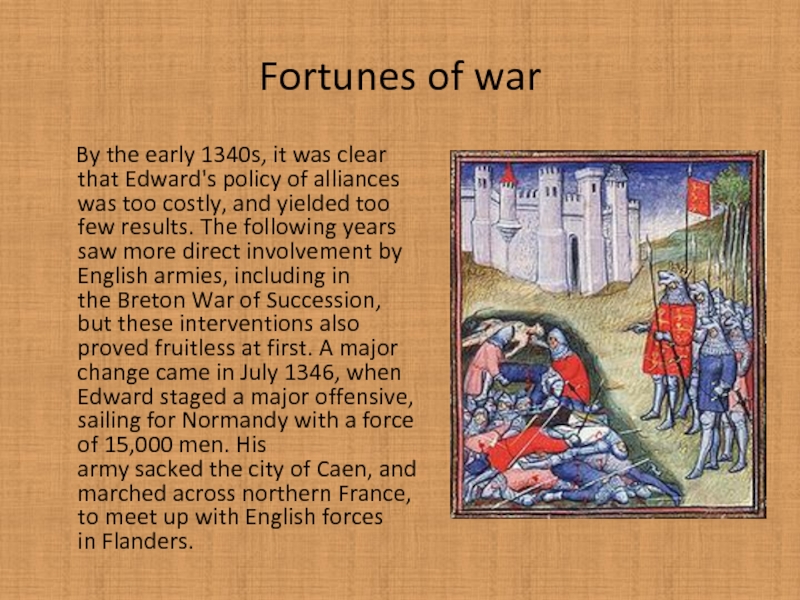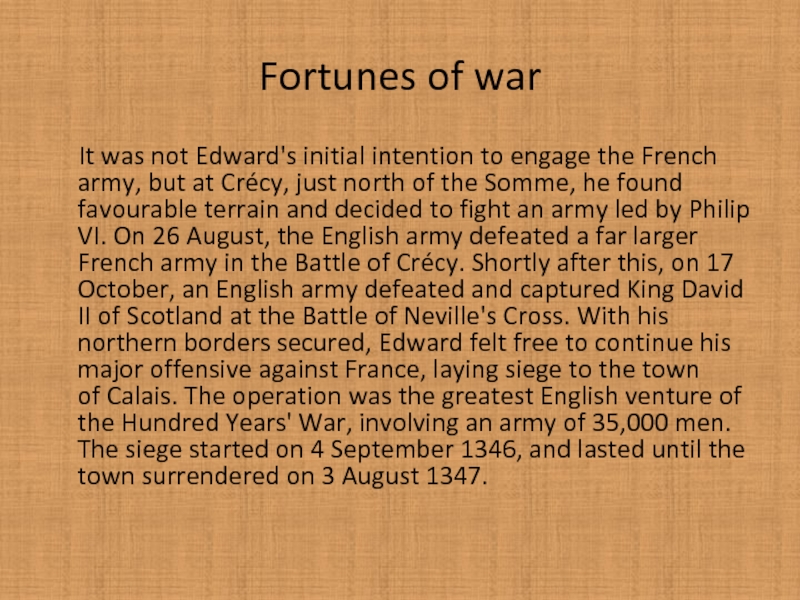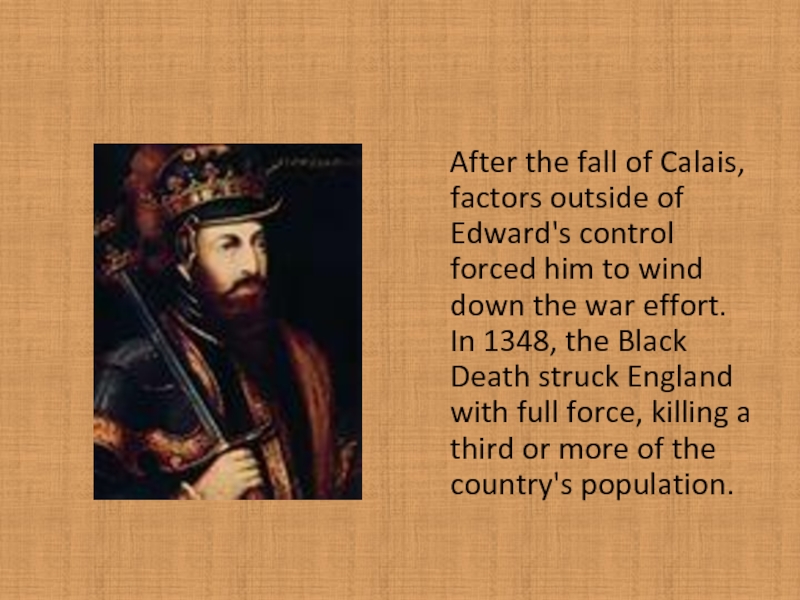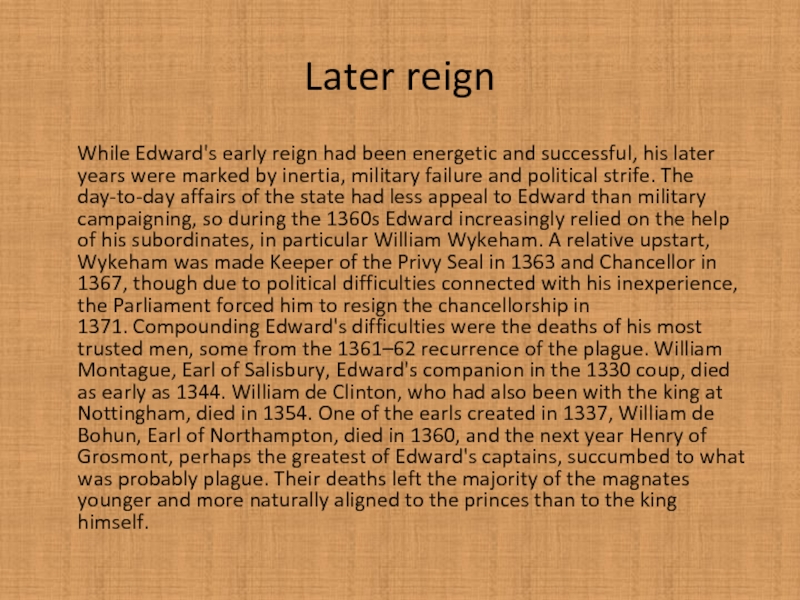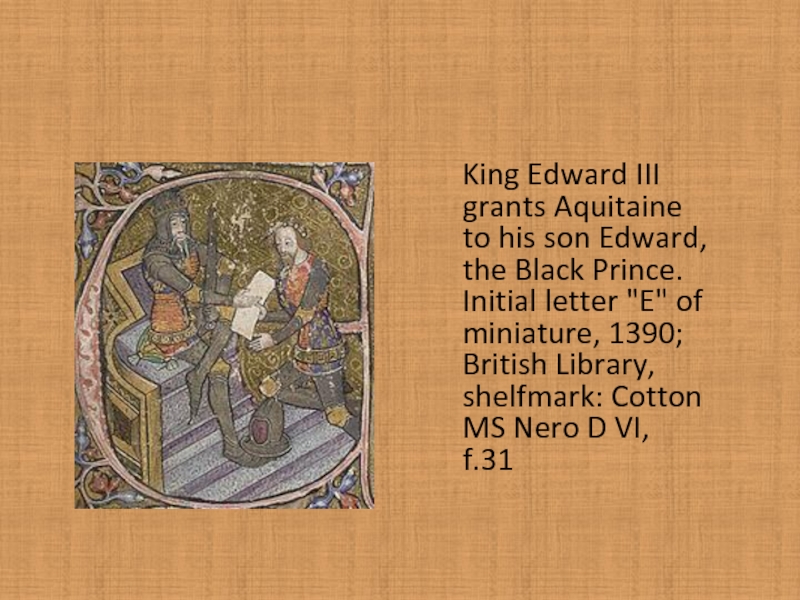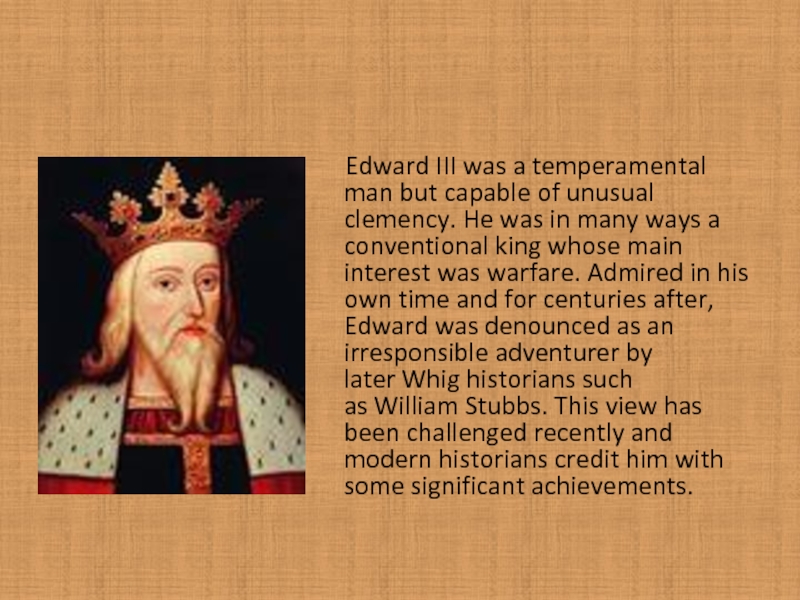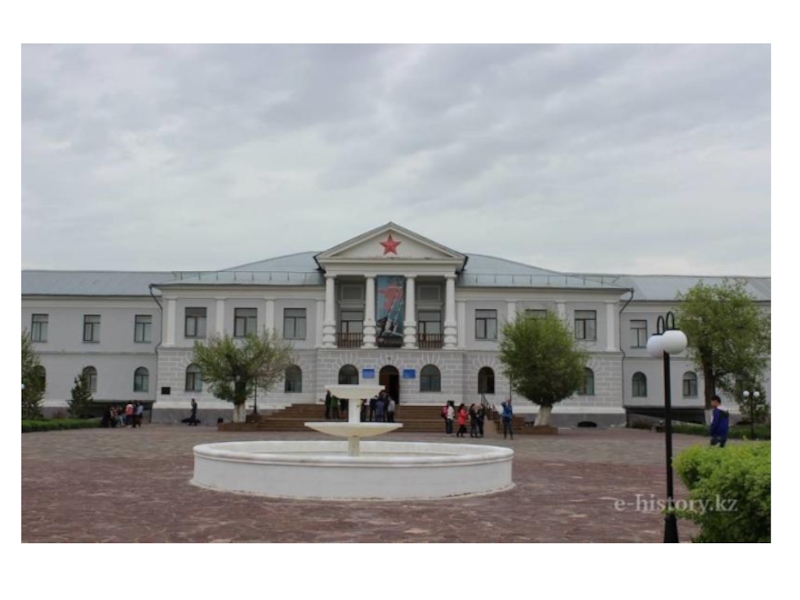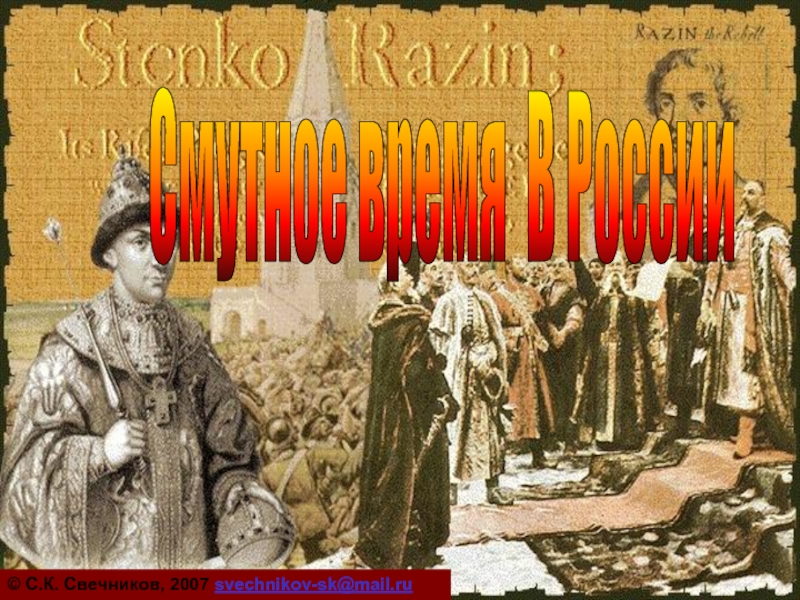- Главная
- Разное
- Дизайн
- Бизнес и предпринимательство
- Аналитика
- Образование
- Развлечения
- Красота и здоровье
- Финансы
- Государство
- Путешествия
- Спорт
- Недвижимость
- Армия
- Графика
- Культурология
- Еда и кулинария
- Лингвистика
- Английский язык
- Астрономия
- Алгебра
- Биология
- География
- Детские презентации
- Информатика
- История
- Литература
- Маркетинг
- Математика
- Медицина
- Менеджмент
- Музыка
- МХК
- Немецкий язык
- ОБЖ
- Обществознание
- Окружающий мир
- Педагогика
- Русский язык
- Технология
- Физика
- Философия
- Химия
- Шаблоны, картинки для презентаций
- Экология
- Экономика
- Юриспруденция
Presentation about Edward III презентация
Содержание
Слайд 2
Early life
Edward was born at Windsor Castle on 13
November 1312, and was often referred to as Edward of Windsor in his early years. The reign of his father, Edward II, was a particularly problematic period of English history. One source of contention was the king's inactivity, and repeated failure, in the ongoing war with Scotland. Another controversial issue was the king's exclusive patronage of a small group of royal favourites. The birth of a male heir in 1312 temporarily improved Edward II's position in relation to the baronial opposition. To bolster further the independent prestige of the young prince, the king had him created Earl of Chester at only twelve days of age.
Слайд 3
Early reign
Edward III was not content with the peace
agreement made in his name, but the renewal of the war with Scotland originated in private, rather than royal initiative. A group of English magnates known as The Disinherited, who had lost land in Scotland by the peace accord, staged an invasion of Scotland and won a great victory at the Battle of Dupplin Moor in 1332. They attempted to install Edward Balliol as king of Scotland in David II's place, but Balliol was soon expelled and was forced to seek the help of Edward III. The English king responded by laying siege to the important border town of Berwick and defeated a large relieving army at the Battle of Halidon Hill. Edward reinstated Balliol on the throne and received a substantial amount of land in southern Scotland. These victories proved hard to sustain, however, as forces loyal to David II gradually regained control of the country. In 1338, Edward was forced to agree to a truce with the Scots.
Слайд 4
To mark his claim to the French crown, Edward's
coat of arms showed the three lions of England quartered with the fleurs-de-lys of France. English stained glass, c. 1350–1377.
Слайд 5
Fortunes of war
By the early 1340s, it was
clear that Edward's policy of alliances was too costly, and yielded too few results. The following years saw more direct involvement by English armies, including in the Breton War of Succession, but these interventions also proved fruitless at first. A major change came in July 1346, when Edward staged a major offensive, sailing for Normandy with a force of 15,000 men. His army sacked the city of Caen, and marched across northern France, to meet up with English forces in Flanders.
Слайд 6
Fortunes of war
It was not Edward's initial intention
to engage the French army, but at Crécy, just north of the Somme, he found favourable terrain and decided to fight an army led by Philip VI. On 26 August, the English army defeated a far larger French army in the Battle of Crécy. Shortly after this, on 17 October, an English army defeated and captured King David II of Scotland at the Battle of Neville's Cross. With his northern borders secured, Edward felt free to continue his major offensive against France, laying siege to the town of Calais. The operation was the greatest English venture of the Hundred Years' War, involving an army of 35,000 men. The siege started on 4 September 1346, and lasted until the town surrendered on 3 August 1347.
Слайд 7
After the fall of Calais, factors outside of Edward's
control forced him to wind down the war effort. In 1348, the Black Death struck England with full force, killing a third or more of the country's population.
Слайд 9
Later reign
While Edward's early reign had been energetic
and successful, his later years were marked by inertia, military failure and political strife. The day-to-day affairs of the state had less appeal to Edward than military campaigning, so during the 1360s Edward increasingly relied on the help of his subordinates, in particular William Wykeham. A relative upstart, Wykeham was made Keeper of the Privy Seal in 1363 and Chancellor in 1367, though due to political difficulties connected with his inexperience, the Parliament forced him to resign the chancellorship in 1371. Compounding Edward's difficulties were the deaths of his most trusted men, some from the 1361–62 recurrence of the plague. William Montague, Earl of Salisbury, Edward's companion in the 1330 coup, died as early as 1344. William de Clinton, who had also been with the king at Nottingham, died in 1354. One of the earls created in 1337, William de Bohun, Earl of Northampton, died in 1360, and the next year Henry of Grosmont, perhaps the greatest of Edward's captains, succumbed to what was probably plague. Their deaths left the majority of the magnates younger and more naturally aligned to the princes than to the king himself.
Слайд 10
King Edward III grants Aquitaine to his son Edward, the
Black Prince. Initial letter "E" of miniature, 1390; British Library, shelfmark: Cotton MS Nero D VI, f.31
Слайд 11
Edward himself, however, did not have much to
do with any of this; after around 1375 he played a limited role in the government of the realm. Around 29 September 1376 he fell ill with a large abscess. After a brief period of recovery in February 1377, the king died of a stroke at Sheen on 21 June. He was succeeded by his ten-year-old grandson, King Richard II, son of the Black Prince, since the Black Prince himself had died on 8 June 1376.
Слайд 12
Edward III was a temperamental man but capable of
unusual clemency. He was in many ways a conventional king whose main interest was warfare. Admired in his own time and for centuries after, Edward was denounced as an irresponsible adventurer by later Whig historians such as William Stubbs. This view has been challenged recently and modern historians credit him with some significant achievements.
